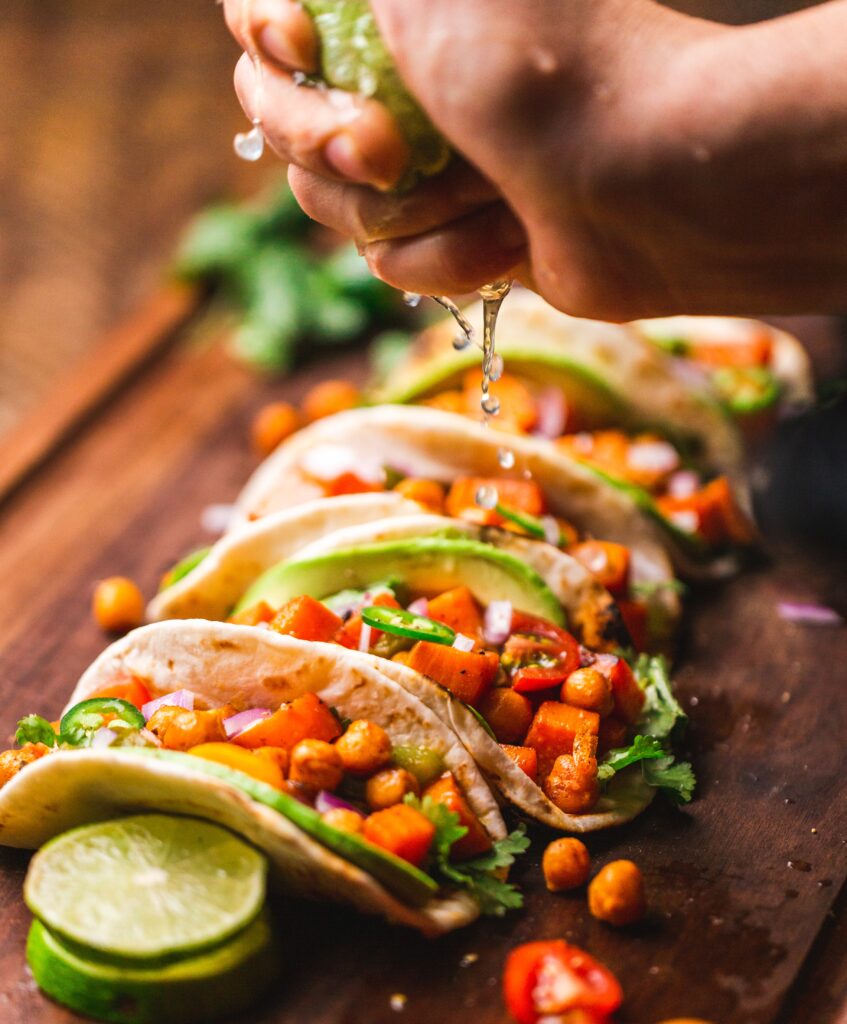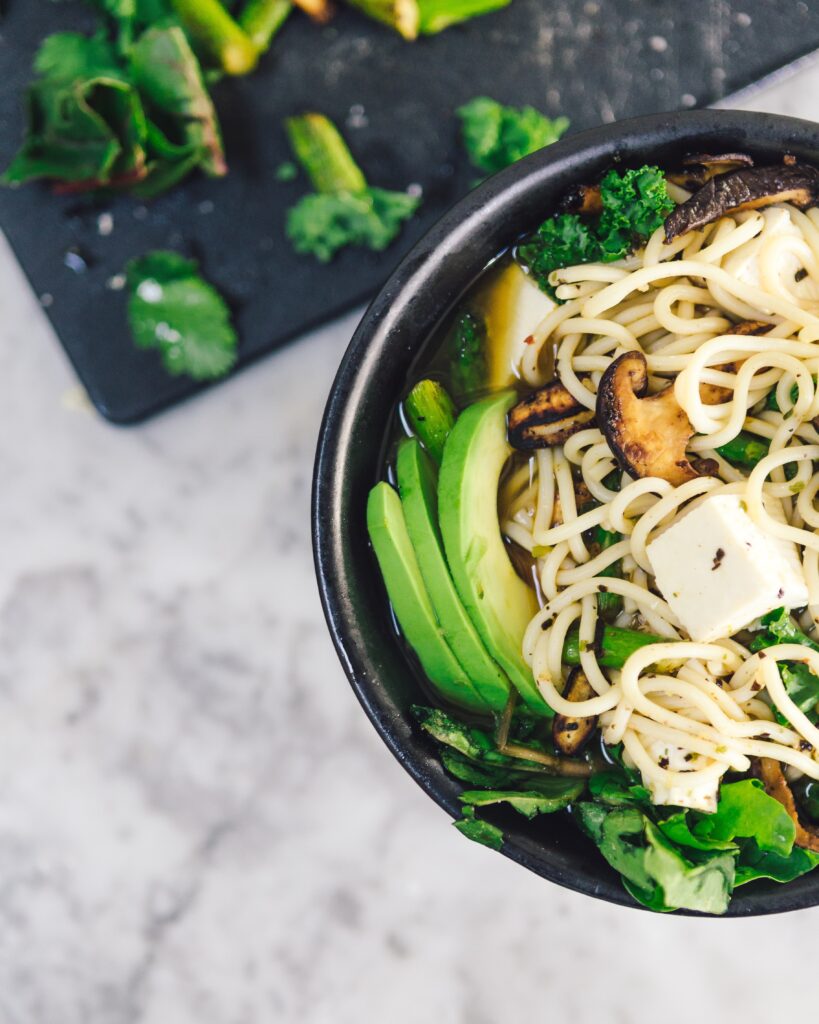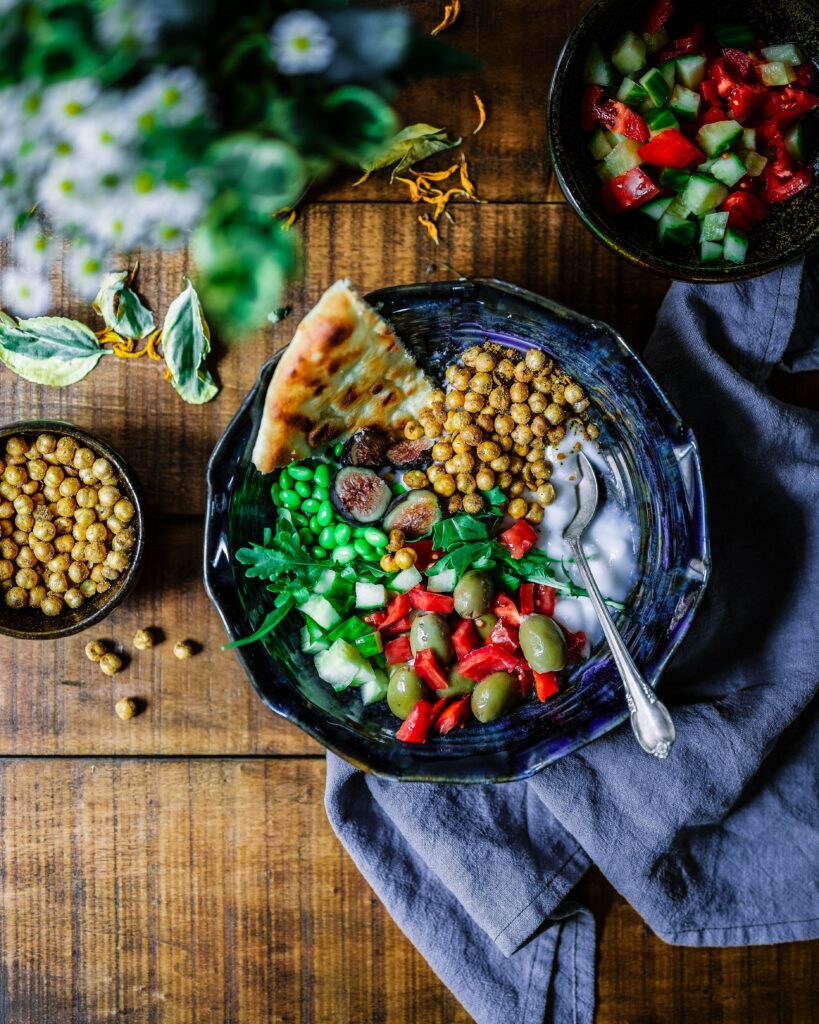Sector
Food
Category
Vision
Author
Maaike van Rooden
Reading time
5 minutes
Plant-based eating can sometimes seem difficult. Especially in Dutch cuisine where potatoes-meat-vegetables traditionally predominate. Meat substitutes are an easy alternative. But when I made the step to a vegan lifestyle almost 5 years ago, a world of flavours and ingredients opened up for me. I started cooking differently and got a lot of inspiration from online recipes and cookbooks. A number of world kitchens make it very easy to ‘veganise’ dishes:
Mexican cuisine
Although tacos and tortillas have been familiar dishes for years, Mexican cuisine is still growing in popularity. This can be seen in the product range in supermarkets, which has developed rapidly in recent years, but also in the increasing number of good Mexican restaurants, such as Coba, Madre, and Bacalar Taqueria in Amsterdam.
The increased popularity is undoubtedly a result of the culinary development in Mexico: for about ten years now a new generation of chefs has started to make Mexican street food into creative haute cuisine. And with success. In 2018, Mexican restaurants were included in the renowned World’s 100 Best Restaurants for the first time.
The traditional Mexican tacos are soft corn dough tortillas. This base is prepared and decorated in various ways. The Mexicans love steak, chorizo, minced meat, and chicken as fillings. But because beans, avocado, and vegetables are also important ingredients in Mexican cuisine, it is easily possible to make full-fledged vegetarian or vegan authentic dishes. You can replace minced meat and chicken with vegetable variants, but also consider jackfruit as a meat substitute.

Recommended vegan Mexican cookbooks:
Must-have ingredients:
- Avocado
- Black and brown beans
- Corn
- Pulled jackfruit
- Rice, tacos, and tostadas
- Coriander

Asian cuisine
Asian cuisine is actually too diverse to put under one heading. At the same time; the richness and variety mean that it can be an overall great cuisine for anyone who is a vegan. When you think of Asia, you think of spicy scents and flavours. Animal ingredients are widely used. Thai curry with shrimp, nasi with chicken, noodle soup with beef, just to name a few well-known dishes. Fortunately, vegetables, herbs, noodles, and rice are also very important ingredients in Asian cuisine. And tofu, tempeh, and mushrooms are easy-to-use protein-rich alternatives to meat and fish. Spicy, sweet, sour, bitter, and even umami can also be easily and perfectly realised through vegetable dishes. From street food to extensive rice tables: the dishes are super-fresh and the preparation methods, including wok cooking, make dishes also super-fresh, and tasty.
Recommended vegan Asian cookbooks:
Must-have ingredients:
- Dark and light soy sauce
- Sesame oil
- Miso
- Coconut milk
- Dried herbs: Chinese 5-spices, cumin, turmeric, cinnamon
- Fresh herbs: coriander, ginger, garlic, chili pepper
- Silk tofu, firm tofu or tempeh
- Rice or noodles
Middle Eastern cuisine
The most famous chef of this kitchen cuisine is undoubtedly Yoram Ottolenghi. Although he is not vegetarian and does not cook strictly vegetarian, vegetables, fruit, legumes, and grains are central to his dishes. This is also typical of Middle Eastern cuisine. Meat, fish, and poultry have a supporting role or are omitted entirely. The dishes are mainly vegetarian or vegan. Tel Aviv even has the largest number of vegans in the world.
As in many cultures, eating can be a very social affair. During family gatherings or celebrations, all dishes are served at the same time and shared together. Preparation is elaborate. Cooking, stewing, and baking are usually started days in advance. The many fragrant herbs and spices make Middle Eastern cuisine very rich and versatile. Cumin, cardamom, turmeric, sumac and za’atar, and baharat are commonly used spices. Mint, parsley, lime, yoghurt, and tahini are used in many dishes, for a fresh taste.
Ingredients from the local nature and the available supply on the local market are used. It used to be much smaller than it is now. As a result, regional differences have arisen between more or less equal dishes. Those recipes have been passed down from generation to generation.

Recommended Middle Eastern cookbooks:
Must-have ingredients:
- Species: Cumin, cardamom, tumeric, sumac, za’atar en baharat
- Sesame seeds for among others tahini
- Chickpeas for among others hummus and falafel
Inspired?
Do you want more vegan assortment in the store, or tasty plant-based recipes from these world kitchens for the company restaurant? This is how we can help you:
Photo credits: Chad Montano, No Revisions and Edgar Castrejon via Unsplash


